Catgirls are great regardless of what they do. This seems to be the thesis statement of Cuisineer, the indie darling made by Battlebrew Productions that tastefully mixes dungeon crawling and restaurant management, with a dash of anthropomorphized animals to boot.
Here, you play as Pom, a catgirl balancing being an adventurer as well as restarateur- slaying monsters on some days and serving a variety of dishes the next. It’s a pretty fun loop- both are equally important halves of the gameplay loop, meaning you can’t ever neglect one for the other. There’s something tragic to the fact that this isn’t all there is in her idyllic life, though.
Rise And Grind
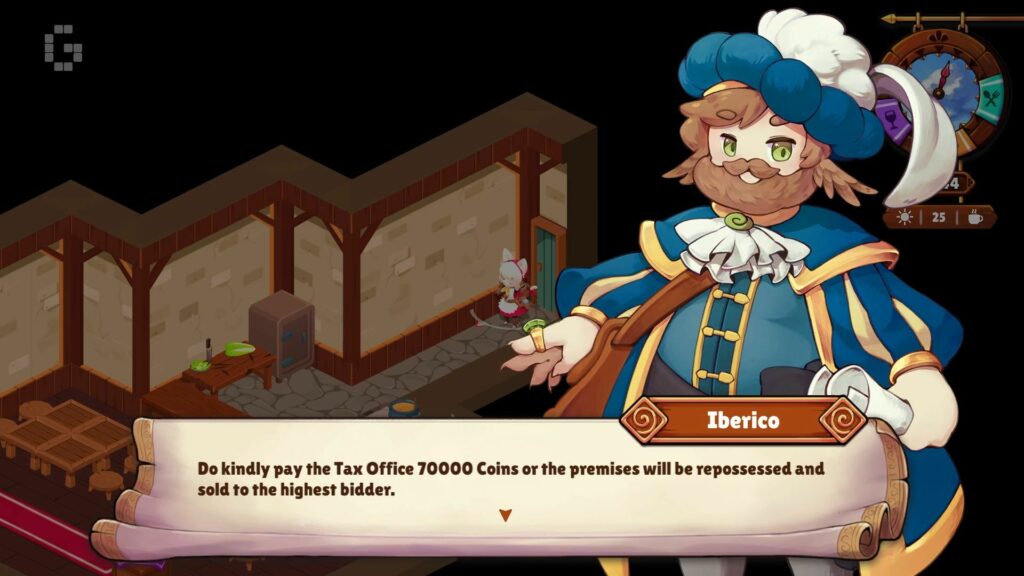
Instead, your main goal you’re set to in Cusineer is debt repayment. Not unlike Animal Crossing, you’re straddled with an alarmingly large debt- meaning you’re going to need to run that restaurant if you don’t want the taxman runs off with it. I haven’t dared test the actual limits of how far you can string the debt collector along, but you’re able to thankfully pay it back in small chunks- so it’s not like you need to live like a monk until your debts are paid off.
Bleak realities aside I’d say the strongest part of Cusineer is by far it’s presentation. The game’s art is simply gorgeous, with every sprite for Pom just exploding with character. It’s the same for the other characters, too- Alder, the carpenter-slash-hunk tells you so much about him simply in two sprites, with one of them being him meekly peeking into the frame. Even nameless town NPCs look lovingly rendered in the game’s sprites- almost making me forgive them when they’re absolute jerks in the restaurant.
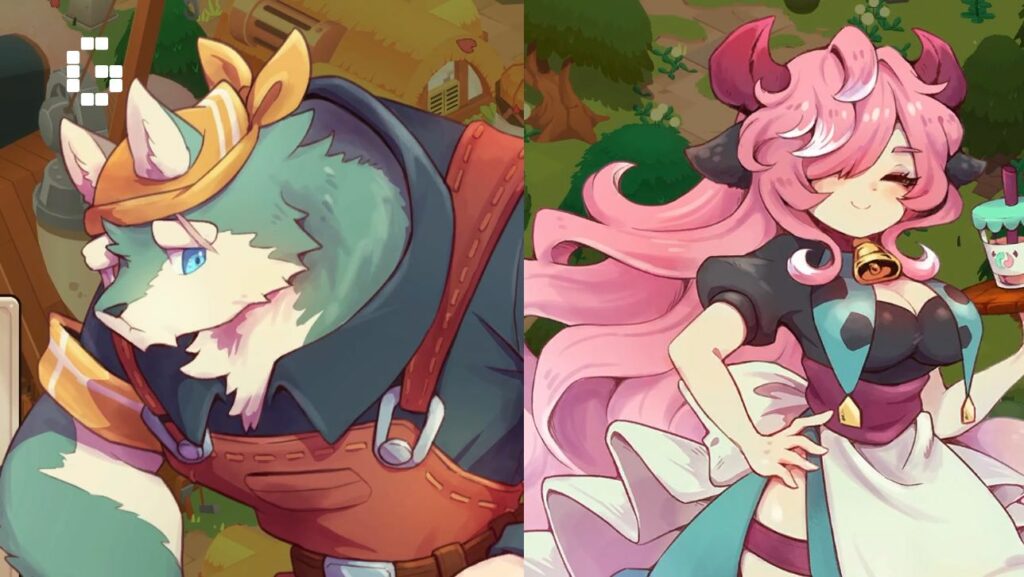
That being said while it’s visually characterful, a lot of how the game relays its information could use some work. In an effort to let you organically learn the game’s systems I’m afraid it’s gone the other way with it- things like the vault and chest for storing ingredients and materials aren’t explained to you, and the fact they’re in opposite rooms just makes inventory management a hassle. Heck, even opening your inventory in dungeons is locked behind the Share Button on a Dualsense controller, arguably the last place you might go looking for it.
Similarly, gathering points in the dungeon blend pretty hard into the game’s scenery itself, only being denoted by their sparkling auras. Considering I’ve decided to walk the path of a giant meat tenderizer, it’s not too much of a gripe for me- anything that can be broken, will be. But admittedly for those of us who go on resource runs it can be quite frustrating since you’re essentially looking for a very tiny flag telling you when a tree can be smashed up to be turned into a chair.
The Diner Dash
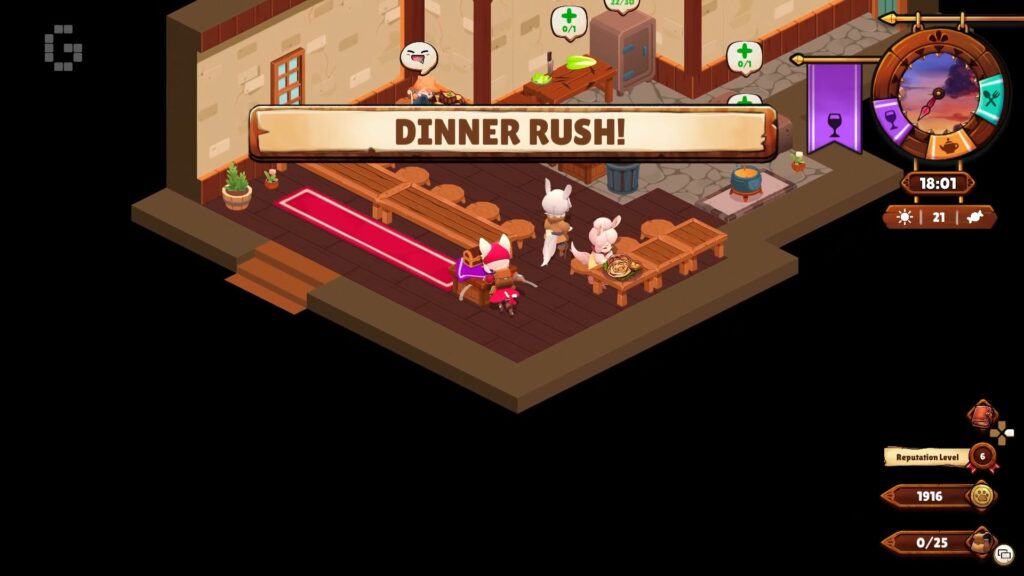
The Restaurateur portion of Cusineer plays out pretty similarly to any number of restaurant sim games, only designed by someone who’s clearly got ideas on how to fix them. As someone who grew up playing Diner Dash, having customers actually have the ability to get up and get their own food is a godsend- and the relatively short cook times mean you don’t ever have a second to lollygag.
It’s a really fun kind of flow-state experience- once you really hit your stride you won’t really be thinking about it too much, and the game even lets you close up shop any time you want.
On top of that, there’s the menu items themselves. The team at BattleBrew Productions have an endearingly familiar list of menu items, full of menu items like Popiah, Ais Kacang and more. You unlock these by fulfilling requests for the NPCs in town, as yet another pillar holding up the restaurant/dungeoncrawling loop.
Catgirl Dungeoneering
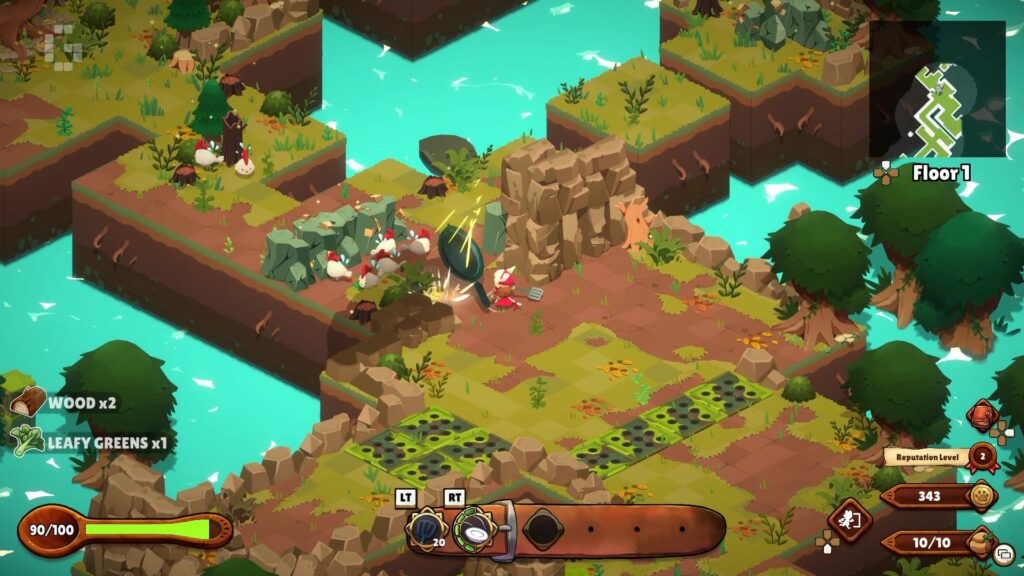
Of course, there’s also the actual dungeon crawling itself. It’s really here that Cuisineer most wears its influences on its sleeves. The combat is really similar to titles like Hades or Hyper Light Drifter, with a weapon attack, special attacks, a dash crafted by a god as well as a dash-attack.
The most interesting thing about Cuisineer’s level design though is how it treats its encounters. In a lot of dungeon crawlers enemies tend to be more sparsely distributed, yet Cuisineer’s locales are seemingly teeming with them. The reasoning is obvious enough- they’re also your main source of ingredients, which you’ll need to run your restaurant.
Thankfully, as a result Pom’s moveset is also pretty good at dealing with crowds. Even the default spatula you start with can easily hit multiple enemies at once, making farming ingredients a pretty relaxing experience. The fact there’s multiple weapon types adds a nice layer of flavor to the the mix too- I was strutting around the dungeon with a giant meat tenderizer doing greatsword combos on sentient flour, and the lack of any overly stressful portions made it all a good time.
The weapons themselves also have a decent amount of sauce to them, too- even early on in the game you can get all sorts of bonus effects, like lighting things on fire and the like to do more damage. Mix that with some genuinely cool special moves and you have a genuinely fun kit to experiment with.
That being said, it does feel like the game can get a little too chill for its own good. For those of us who are used to dungeoneering with purpose, sometimes the procedurally generated layouts can feel endless- with no kind of flow directing you to the next floor. It works in the sense of the game itself- it really feels like exploration, not combat is meant to be your focus. Still, if you’re the type that needs that structure it can feel like you’re wandering a little aimlessly when all you want is the endorphin hit of a new floor.
Closing Thoughts
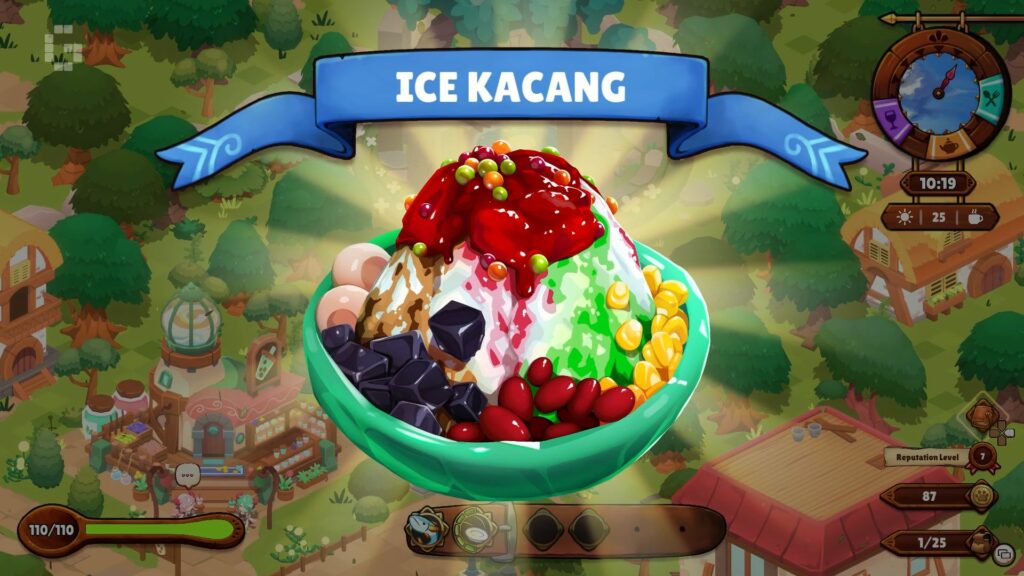
It’s hard to see Cuisineer as anything else than an intense labor of love. You can easily the game’s biggest influences on its sleeves, but it mishes and mashes them in innovative ways that make it feel fresh and new rather than derivative.
It’s cute, it’s quirky and it’s utterly engaging- the biggest drawbacks you’d get from the game come instead from assuming it’s any one of its components, rather than its stitched-together whole. Rather than look for a super deep dungeon crawling experience, it’s meant to be evaluated next to its restaurant portions, revealing what I suspect is the game’s true motive all along- a game that’s more about the joy of lazily spending time with it, rather than rushing to a finish line.
That, and paying your bills. Always pay your bills.
Join Us!
We are recruiting! If you want to break into the gaming media industry, don't miss out on the golden opportunity. Find out more: Malaysia. Overseas.The Review
Cuisineer
PROS
- A diverse amount of things that make it fun
- Great character designs
- Combat feels good
CONS
- Some decisions can make the game feel harder to get into
- Having genre expectations can be a downside.



![[SEA Exclusive] From Shadows to Shipwrecks – Jennifer English Talks About Bringing Emotional Depth to Clair Obscur: Expedition 33](https://cdn.gamerbraves.com/2025/04/Clair-Obscur-Jennifer-English_Interview_FI-360x180.jpg)






![[EXCLUSIVE] Do the Game Interview – An Intimate Look at the Challenges of Game Development](https://cdn.gamerbraves.com/2025/04/Do-the-Game_Interview_FI-1-360x180.jpg)
![[EXCLUSIVE] Interview with the Minds Behind of Den of Wolves – 10 Chambers’ New Sci-Fi Heist FPS](https://cdn.gamerbraves.com/2025/04/Den-of-Wolves_Interview_FI-360x180.jpg)










![[GUIDE] Finding Alma’s Lost Glasses in The Apple of Her Eye Side Quest](https://cdn.gamerbraves.com/2025/04/Alma-Glasses-Quest_Gudie_FI-360x180.jpg)



![[GUIDE] Farming Nightflower Pollen in Monster Hunter Wilds](https://cdn.gamerbraves.com/2025/03/MHWilds-Pollen_Guide_FI-360x180.jpg)
